digital marketing
Why are there so many social media platforms? How do you know which is the right one for your business? Should you pay to boost your content?
Social media can seem mysterious to the business person who wants to use it for promoting their business. But much of what they do can be demystified with the three A’s, attention, audience and assessment.
Social media networks, like the news networks before them, are focussed on attention. Specifically, getting long bouts of attention from users. We hear a lot about how social media is ruining attention spans with short blips of content, but users can spend hours a week, if not a day, scrolling through the endless stream of content.
With your business posts you are looking to interrupt this stream with something that grabs the attention. This doesn’t have to be something outlandish or shocking, it can simply be something that stands out for your audience.
Depending on the social media network the audience may be seeing things about their friends and family circle, the celebrities they follow, their interests. Then there’s your post, what can you do to make yourself seem different to these other posts? How can you annex some attention?
A core part of attention is interest, when you’re establishing your social media presence you want to do so where your interested audience is.
This can vary by industry and social media platform so it always requires some research before you start but a key indicator is to do some competitor analysis. Where are businesses like yours set up on social media? What does their follower audience look like?
This will give you an idea of what is working but it also gives you a basis from which to ask, does this audience exist somewhere else where my competitor doesn’t have a presence? Can you be first to contact an audience via a different channel? This certainly gives you an opportunity to find new customers and clients.
Once you’ve thought about how to grab attention and who to aim it at, you should engage in continual assessment of your posts.
Look at what gets engagement and what doesn’t. When you pay to boost posts, how do the results compare with your expectations? Were the results bad, or your expectations high?
You will never stop assessing your posts, measuring them, understanding what performs and what doesn’t.
The idea that there is some concrete formula that will see you right for social posts, that will bring business flooding in every time, is a fallacy. The networks themselves change modelling and algorithms on a frequent enough basis that any formula would be short term, but what they cannot change is what an audience is looking for on social media.
Define your audience, talk to them in a way that differs from the rest of the content they’re encountering and keep assessing what you do to ensure you maximise your potential, that you explore new ideas and give your audience a reason and opportunities to connect, engage and do business with you.
If you’d like a hand solving the mystery of social media marketing, then get in touch and we’ll work it out together.
While our team are all pretty used to working remotely, we know that some of you will be making the most of your lockdown days at home spring cleaning, cooking, reading or perhaps wrapping up warm in a blanket and binge-watching your favourite shows on Netflix. Another option could be wasting time on the internet.
It’s rare that any of us get the chance to just sit and surf at our leisure these days. So, we thought we’d share with you a few of our favourite websites. Each has been selected for a different reason and is wonderful in its own right.
Lush
Lush specialise in fresh handmade cosmetics. You may have seen – or rather smelt – one of their stores on the UK high street. Founded by Mark Constantine and Liz Weir in Poole, England, the company sells natural hair and beauty products which are all handmade in their factory in Poole, Dorset. Lush pride themselves on their brand values, which include being 100% vegetarian, not testing on animals, ethical sourcing of their ingredients and naked products (minimising packaging where possible) to name just a few. Here’s why we love their website.
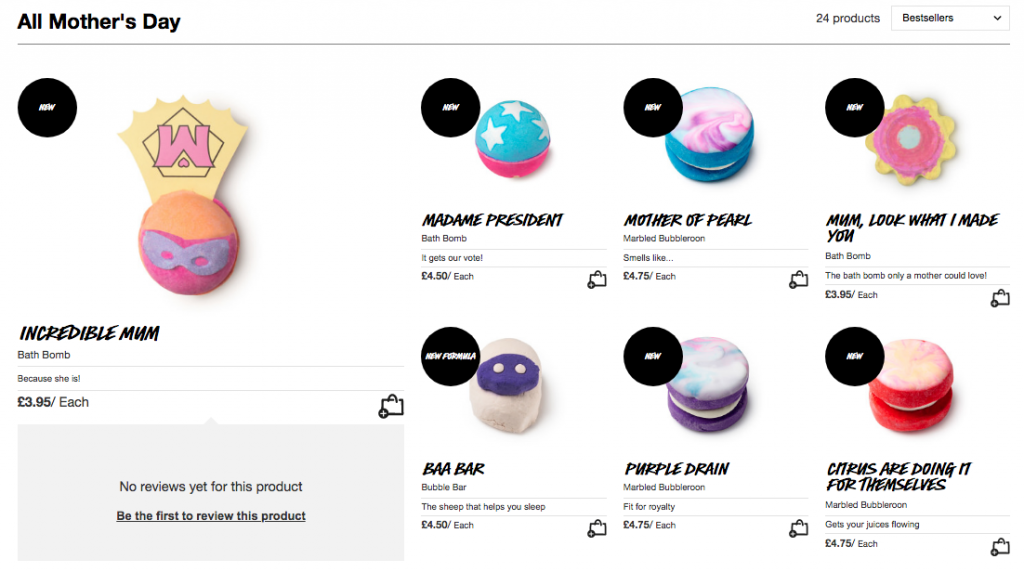
- The homepage of the website is always updated with seasonally relevant products and campaigns including beautiful videos of products in action!
- The design of the website is simple and clean which really maintains the focus on the products and makes the product imagery stand out.
- Brand values and messages are clearly communicated throughout the site helping instil brand identity and customer confidence.
- Information is shared but not in an overbearing way with snippets being shared throughout the site as you shop.
- Customers can shop by ingredient while learning about the natural benefits and qualities of each one!
- They have online exclusives to keep in-store shoppers engaged with their website too.
BuzzFeed
It’s highly unlikely that you haven’t stumbled across a BuzzFeed article in some way, shape or form by now. BuzzFeed is an independent digital media company delivering news and entertainment to people around the world via its website, apps and social media channels. The organisation claim, “We strive to connect deeply with our audience, and give them news and entertainment worth sharing with their friends, family, and the people who matter in their lives.” And that’s just why we like them! The perfect website for killing time on your mid-morning coffee break or learning things that you probably don’t really need to know, BuzzFeed is packed full of news, videos, quizzes, recipes and much more. Here’s what they do well.
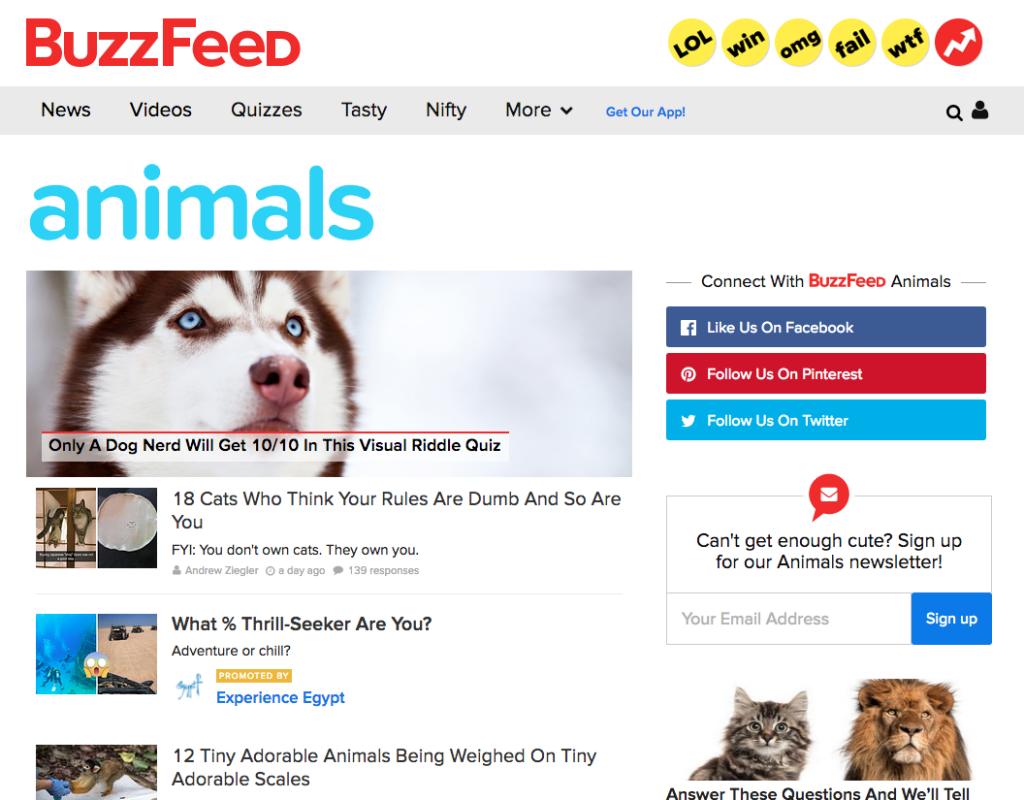
- Light-hearted content. While you’ll find serious stuff on here too, if it’s a break from the doom and gloom of the world that you’re looking for, you’ve come to the right place.
- Cross channel integration. For BuzzFeed social media is an equally important way to reach people and they’ve got this down to a fine art.
- It reads like a newspaper. The simple journalistic design of the website makes headlines pop and encourages click-throughs to articles.
- They have a quiz called “Do You Actually Prefer Chocolate or Cheese?”!
Not on The High Street
If you’ve ever been looking for a one-of-a-kind gift for that friend or family member who is just so tricky to buy for the chances are that you’ve visited ‘Not on The High Street’. Founded ten years ago, the brand aims to bring together “unique, stylish and never-before-seen products that are hard to find anywhere else”. They are home to more than 5000 of the UK’s best creative business and have a fantastically functional website to showcase them.
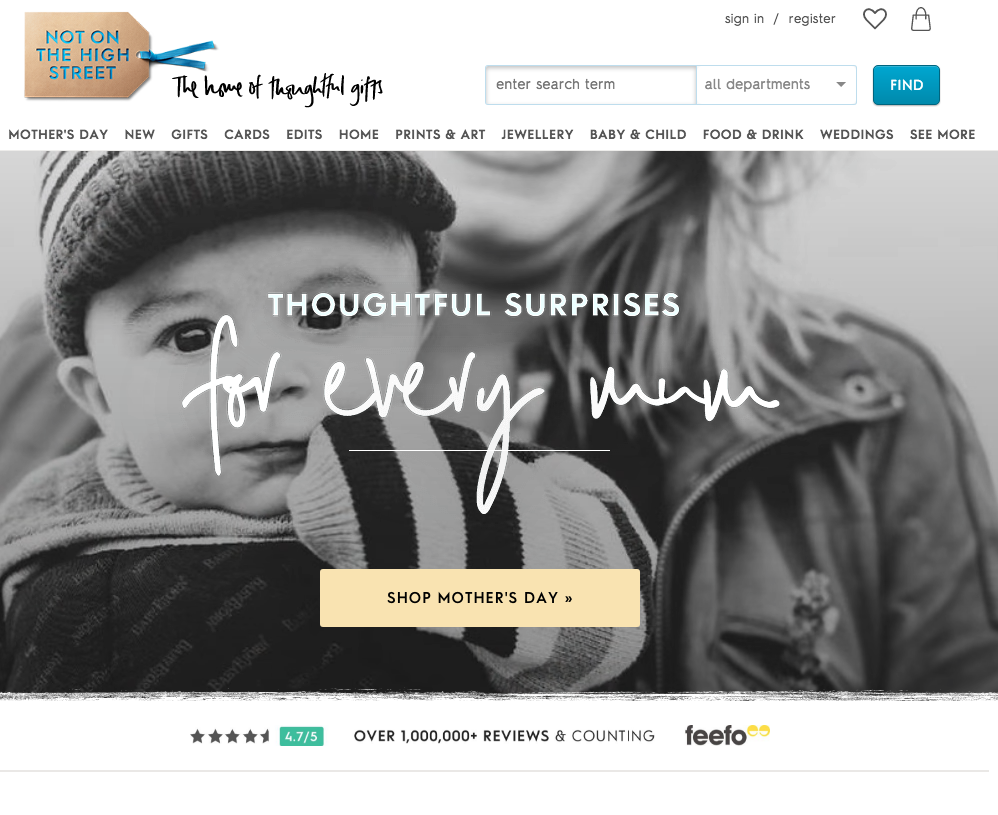
- This website is particularly easy to shop with users being able to search by occasion, gift recipient, category or a specific key word search.
- An extensive range of filters allow users to narrow down their options easily by price, personalisation, colour, size and special features.
- The design is simple and doesn’t detract from the products.
- Product imagery is of the highest standard and stylistically consistent.
- Seasonal features on the homepage help plant new ideas for shoppers to consider, creating the opportunity for additional sales.
Magic Seaweed
Magic Seaweed has a very specific following. With surf reports, surf forecasts, web cams and surfing photos for spots around the globe, it’s the go-to place on the internet for the surfing community. While it’s a niche website tailored to a very specific interest, here’s why we think it works so well.
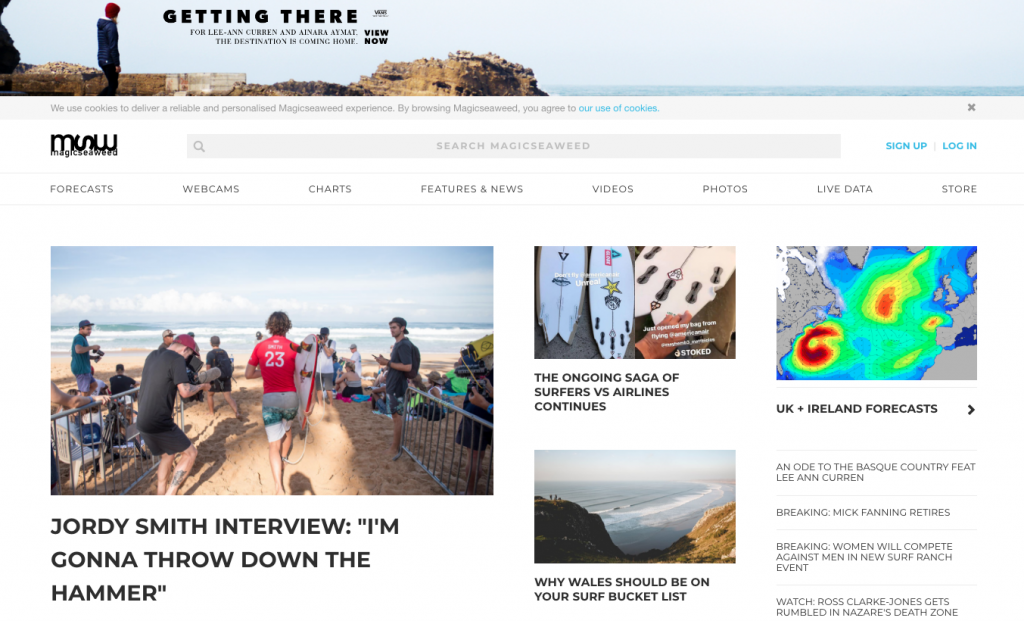
- The website design itself is simple and while it contains lots of different types of content it doesn’t feel cluttered.
- The menu is clear, always visible and easy to navigate, enabling users to find what they’re looking for quickly.
- Magic Seaweed have found a way to include informative content like weather charts and articles, alongside visual media like videos and photography, which somehow all work in harmony to create a great overview of the community and the sport.
- They have successfully included an eCommerce facility on their website which somehow feels like an extension of the website rather than a standard online shop.
The British Fashion Council
www.britishfashioncouncil.co.uk
The British Fashion Council (BFC) is a not-for-profit organisation that aims to further the interests of the British fashion industry and its designer businesses by harnessing and sharing collective knowledge, experience and resources of the sector. It focuses on business, reputation, education, digital and investment so it’s website needs to strike the right balance between visual content and information, as it serves as a resource for industry professionals as well as representing what’s currently happening creatively.
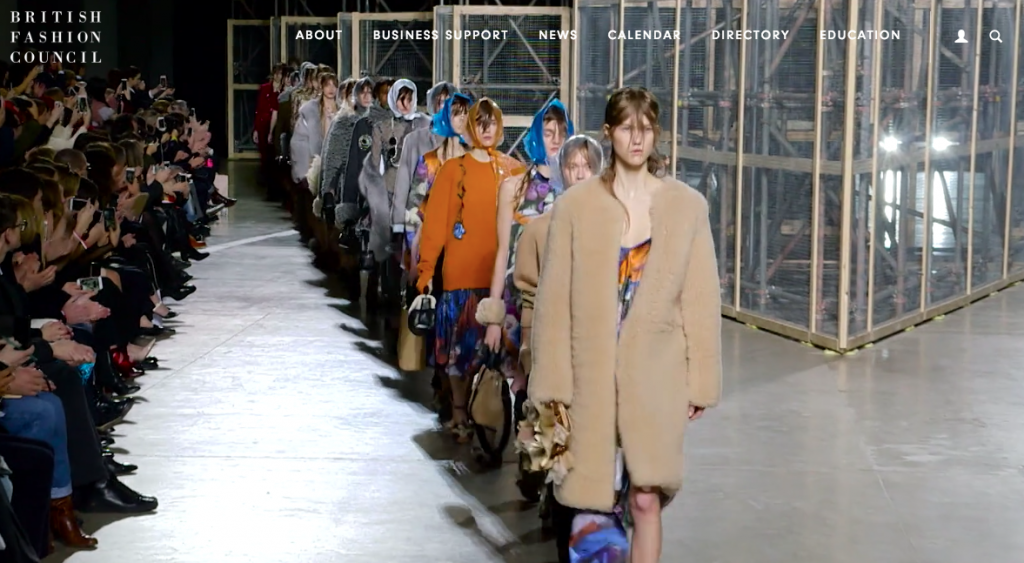
- The homepage of the site is instantly interesting and engages the user with a full screen video without compromising the navigation menu.
- The design is fit for purpose. Fashion was designed to be showcased on moving models and this has been captured in the website.
- Information is easy to find and resources are well organised.
Are you feeling inspired and thinking of setting up your own website? Perhaps you need to inject some fresh thinking into an existing one? Get in touch with our team and find out how we can help. Email [email protected] or call us on 01600 891525.
If you haven’t used GIF’s in your communication before now, then there’s no doubt that you’ve seen them around. GIF’s have grown in popularity so much that you can even search for GIF’s quickly with a shortcut on many smartphone keyboards and on most social media platforms.
What exactly is a GIF? A Graphics Interchange Format is, in official terms, a bitmap image format for files that supports both animated and static images. In layman’s terms, it is, in essence, a digital flip book of images going around in a loop.
The popularity of the GIF is quite ironic, because GIFs were actually invented before the internet itself! The first GIF was created in 1987 by Steve Wilhite.

Twitter introduced GIF search back in 2016 in a bid to keep moving forward with culture. David Macintosh, CEO and co-founder of Riffsy, a GIF library platform, expressed his feelings towards the move; “So much can be expressed with GIFs, and the key is to find just the right one in the moment that quickly and efficiently expresses your emotions.”
Now, Riffsy has been re-branded as Tenor, and Google bought the popular GIF platform so that users can even search for them in Google Images. Our digital culture has GIFs ingrained in it as part of the language, and the marketing industry is jumping on the bandwagon more and more.
Why? Unsurprisingly, marketeers aren’t just using GIFs because they’re fun (but that is a bonus), GIFs make for much higher engagement rates and allow brands to express a lot in just one image.
Here’s just a few reasons that GIFs work so well for marketing:
They’re Easy to Consume

With our attention spans getting shorter and shorter, conveying a message that’s easy to consume is more important than ever. You can convey a message to users without them even having to stop scrolling with a GIF.
The internet likes GIFs
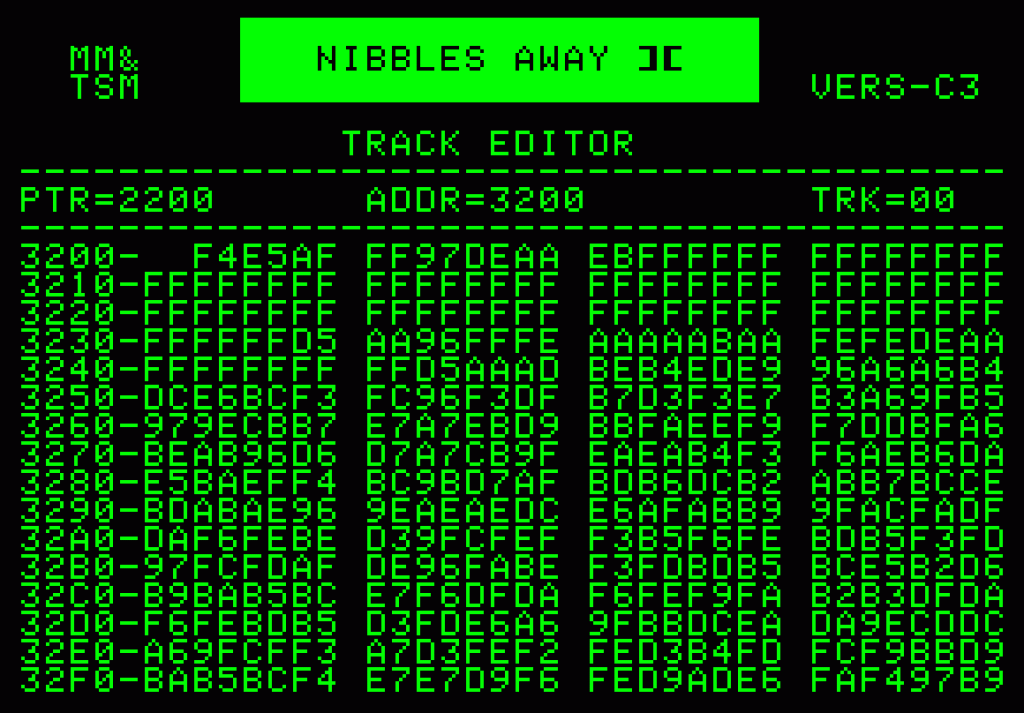
The file size of a GIF is significantly smaller than that of a video, so upload time is much quicker than it would be for a video. The internet reads it as an image, whilst we get the benefits of a video.
They’re cheap and easy

The design and creation of GIFs is miles easier than video. It takes less time and less money, the two most crucial elements of a marketing strategy.
GIFs Add Personality to your Brand

People are much less receptive to traditional methods of marketing than they used to be, and they crave creativity and personality. GIFs are a great way to feed this need and can encourage more sharing and engagement.
We could go on with the list of benefits of GIFs, but we’ll just leave you with this:
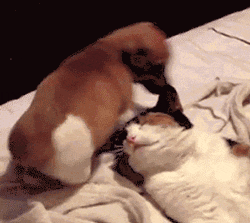
If you’d like some help with your marketing strategy and the integration of modern trends, then please contact us and we’ll see how we can help.
The world of marketing has changed dramatically over the last 20 years. With the advances of digital technology, gone are the days of the simple mail shot and the cold caller. With an effective online strategy, we can now reach our audiences 24/7 through the screens of the portable devices that they hold in their hands.

With such an opportunity can you really afford not to make the most of it? Surely you know your business best? So, why outsource your digital marketing to an agency?
One – An Objective Opinion
While it’s great to be at the heart of your business – no one knows your product/service better than you – sometimes it’s great to have a new set of eyes and some fresh thinking from someone who is one step back from it. Your marketing manager is in a position to be able to be objective about what you do well and what you need to do better and has the best industry knowledge to advise you from a neutral stance.
Two – Marketing Trends
Just like fashion and food, digital marketing is not exempt from trends. In 2017 we saw a huge surge in video content and so far, 2018 has seen the rise of influencer marketing and automation. So, ask yourself this? Do you have the time to keep up to date with the latest digital marketing trends as well as running your business? We think the answer is ‘probably not’. Find yourselves someone who has their finger on the pulse when it comes to the what’s hot and what’s not of marketing.
Three – Your Time is Precious
Running a business is no easy feat. Perhaps you’re just starting out as a one-man-band and juggling spinning plates? You might have a team around you but they too will take time to manage. Why not give yourself one less thing to worry about and put your digital marketing in the hands of a professional with industry knowledge who will get you the best results.

We work with organisations of all sizes and we understand that not every business has the budget for an all-singing, all-dancing, digital marketing campaign. That’s why we’ve also put together three ways for you to save time if you’re running things in house.
One – Utilise Seasonal Support
If you’re in an industry that experiences busier and quieter periods, paying someone else to take charge of your marketing all year round, while you’re sat twiddling your thumbs for half of it might just seem a little silly. This is where seasonal support comes in. Often setting up social media and branding your channels can be a time-consuming process too. So, let someone else save you time and get you going, or have them take the reins for the months that you’re flat out. This will be much more efficient and in the long run more cost effective for your business.
Two – Plan Ahead
We understand that making time each and every day to post to all your social media channels can be a little daunting. Especially if you’ve not quite got to grips with all the different platforms. Be smart and spend a morning a month scheduling your social media content for the month. Tools like Hootsuite are here to help you and allow you to post to multiple social networks from one platform. A content calendar will help you plan ahead and steer your digital marketing in the right direction.
Three – Be Clever with Your Content
Organise your content library and categorise images and information. This might seem time consuming but get into the habit of doing this as you go and it will be easy to find content quickly. Dropbox works particularly well if you need to share this as folders across a team. Don’t forget that resources like Canva can also help you design and edit your own branded content to use time and time again.
If you’re interested in talking to our team about your own digital marketing requirements we’d love to hear from you. We offer monthly management packages as well as bespoke one-to-one support. Email [email protected] for more information or give us a call on 01600 891525.
Social media giant Facebook was the brainchild of Mark Zuckerberg who launched the platform back in February 2004 with fellow Harvard University student, Eduardo Saverin. Whilst it was initially designed exclusively for Harvard University students, Facebook was soon rolled out to colleges across the USA and Canada and eventually made available to anyone with a valid email address, over the age of 13 in 2006.
11 Years on from its public release, it’s now difficult to imagine a world without Facebook and it’s estimated that 2.2 billion people are active on the platform worldwide. However, recently there has been much controversy surrounding the social network.
There have been allegations that the social media giant has exposed the data of 50 million users without direct consent. In addition, Facebook’s moral position on connecting the wrong kinds of people has also been called into question.
While there is a distinct difference between using the platform on a personal level and as a business, the fact is that if people do delete their personal profiles, there will be no one left on the platform for your business to reach.
So, should you and your business still be using Facebook? We thought we’d let the statistics help you decide!
In Favour
> Website Quora reported that, “Mark Zuckerberg says he has not seen a “meaningful number of people” deleting their Facebook accounts in the wake of a scandal that caused users to question how well the social media site protected their data.”
> Facebook is a great way to reach a targeted audience.
> 83% Of women use Facebook while 75% of men use the social network.
> 16 Million local business pages have been created as of May 2013 which is a 100% increase from eight million in June 2012.
> According to technology research company Forrester, 78% of teens online use Facebook. This is the same proportion as in 2014 and Facebook remains one of the more popular social networking sites, second only in popularity to You Tube.
Against
> There are an estimated 83 million fake profiles.
> 40% Of Facebook users have never “liked” a Facebook page.
> Facebook has played a significant part in the rise of Fake News as it tries to position itself as a news portal while continuing to promote freedom of speech. You can see where the lines become blurred.
> The newsfeed has now become so diluted that it’s not considered a valuable source of information.
> There is an argument that Facebook can take traffic away from your business’ website.
Make up Your Own Mind
Essentially no one can answer this question for you because each and every business is different. Even with the recent controversy, the network remains popular and even while some millennials now deem it “uncool” it’s unlikely that we’ll see a total boycott anytime soon.
Given the statistics above, it might seem crazy not to have a business presence on Facebook. However, it’s worth considering your target demographic and whether this is the right platform to reach them.
Having a Facebook page is only really worthwhile if you’re going to spend time updating it with engaging content. But what if the people who you want to engage with your content aren’t there? It’s worth considering if investing your time on this social network is worth your effort.
Security and data breaches aside, using things like Hootsuite can help save time with your social media posts, allowing you to simultaneously post to accounts on different social networks. Making it easy enough to keep your business presence on this platform and keep your page content ticking over.
If you’d like more information on how to set up a company page for your business on Facebook or if you require some other social media support, contact our team. You can email [email protected] or call us on 01600 891525.
At LimeGreen, we’re delighted to have had the pleasure of working with a variety of organisations across various industries and 2017 was no exception.
Before we start any project, the first thing we like to do is get to know our clients because if we understand them and their customers, then we can understand how best to market their product or service to their audience.
Of course, working with some clients requires a little more research than others but we’re always keen to learn! With this in mind we thought we’d share some of the weird and wonderful facts and figures that our clients shared with us in 2017.

Christmas Day is the only day when your clock and your sundial will read exactly the same time, meaning that you can take a break from mathematics and the Equation of Time.

According to research, the average person needs approximately 3.5g of collagen in their diet each day to prevent wrinkles, strengthen bones, and improve overall health, although this will of course vary from person to person depending on the age and general health. Osius Beef Bone Broth contains a huge 3.4g of natural collagen per 100ml.
The National White-Water Centre

In order to kayak at the National White-Water Centre there must be 7 cumecs of water or more flowing in the River Tryweryn. If you want to raft then you’ll need 9 cumecs of water or more. The water is released from Llyn Celyn Reservoir by Natural Resources Wales (NRW).

Anthelmintic resistance is a serious and increasing threat to the global health and welfare of livestock. Basically it’s where parasites such as worms have become resistant to the drugs (anthelmintics) used to contain livestock infections. If unchecked, it could lead to existing drugs becoming ineffective with a potentially catastrophic impact on animal welfare and production.

More than 1/3 of farmers and growers in the UK are using the sun, wind, farm by-products and energy crops to produce clean, low-carbon energy. The NFU believes that domestic land-based renewable energy can deliver up to a quarter of UK clean energy needs by 2020.

Female turkeys are called hens, male turkeys are stags and baby turkeys are called poults until they are 5 weeks old. And the average weight of a Christmas turkey is 5.5kg/12lb with approximately 10 million eaten in UK every Christmas.
If you’d like to find out more about the fantastic organisations we’ve been supported, check out our work. If you’d like to talk to one of our team about your own marketing call us on 01600 891525 or email [email protected].
Pantone have recently announced their ‘Colour of The Year 2017’ and we couldn’t be happier with their selection.
At a glance we could see that ‘Greenery’ closely resembled our own brand colours, but as we delved a little deeper into it’s colour story, we found some more similarities.
To quote Pantone…
“Greenery is a fresh and zesty yellow-green shade that evokes the first days of spring when nature’s greens revive, restore and renew.”
This concept isn’t so far away from our own ‘fresh thinking’ ethos, as we help our clients revive their brands and reach out to their audience in new and inventive ways.
When it comes to brand consultancy, we encourage our clients to take a step back and evaluate their current digital presence before helping them identify how best to inject some new life into their organisation. Likewise, Pantone claim that…
…the fortifying attributes of Greenery signals consumers to take a deep breath, oxygenate and reinvigorate.”
It would seem great minds think alike!
You can read the full ‘Colour of The Year 2017’ announcement and find more information on the Pantone website, including colour charts and ‘Greenery’ merchandise – we’ve already got our eyes on those mugs!
The image for this post was taken from the Pantone website.
This week the LimeGreen team have been joined by Beatrice Smith from Monmouth Comprehensive School. Beatrice has been spending time with us and learning all about digital marketing as part of her work experience placement.
With less than six weeks until Christmas, now is the time we start to see seasonal adverts creeping into the schedule so we asked Beatrice to put together some of her favourite festive campaigns.
My Favourite Christmas Adverts
By Beatrice Smith.
John Lewis: The Long Wait – 2011
John Lewis is renowned for its tear jerking adverts and this one is no different. The advert itself appeals to me because of the simplicity of the piece. It brings out emotion that’s hard to explain. You feel almost bad for assuming that the young boy’s interests were selfish ones when actually, all of the impatient glaring at the clock was only him willing the time to go quicker, in order for him to give a present to his parents on Christmas Day.
Sainsbury’s: Christmas is for Sharing – 2014
Sainsbury’s definitely did a good job in attracting my attention with this advert. As 2014 was the 100th anniversary of the spontaneous truce that took place along parts of the western front, during World War I, the brand decided to mark the occasion. Showing how the two countries were able to put the fighting behind them for one day to mark a time of peace and goodwill to all men reminds people of what Christmas is truly about.
Coca-Cola: Holidays Are Coming – Annual
The Coca-Cola Christmas advert will always stand out to me because it’s always shown in the same format. Although they may change elements of it, the majority of the time, the advert has the same classic theme. As soon the Coco-Cola advert comes on, no matter what room of the house you’re in, you know Christmas is on its way – “Holidays are coming!”
Irn-Bru: The Snowman – 2007
As a child the story of The Snowman was a popular at Christmas time, and even more so after the animated film release. The music “Walking in The Air” is instantly recognisable and makes you think of Christmas, so it’s clever that Irn-Bru have used a parody of this to promote their product. Re-working a childhood classic brings back many memories and emotions.
John Lewis: The Bear and the Hare – 2013
This advert is a particularly memorable one, due to the kind nature of the animals. The alarm clock is an endearing gift, that doesn’t just display a material value, but something truly thoughtful. Without it the bear would not be able to wake up and enjoy the Christmas moments with the other animals, making memories which are a gift themselves.
I think all of these adverts appeal to my age group as they play to our emotional side and we are able to connect with them on a deeper level. The music chosen for each Christmas advert helps create a big impact. Whether it’s to instantly grab your attention or simply to help tell a story, music makes a strong visual advert even more memorable. This is why adverts such as ‘The Snowman’ and ‘The Long Wait’ are such massive hits.
We’d like to take this opportunity to introduce you to the newest member of the team at LimeGreen Marketing. Having recently welcomed Hannah into the fold, we’re excited to have her on board as Digital Marketing Project Manager – especially as she claims that she bakes a particularly good cake!
With design training and a background spanning events, public relations, retail and project management we know our clients and their accounts will be in safe hands with Hannah.
“I’m looking forward to putting my creative and commercial skills to good use with LimeGreen,” Hannah tells us. “It feels great to be part of such a friendly team!”

